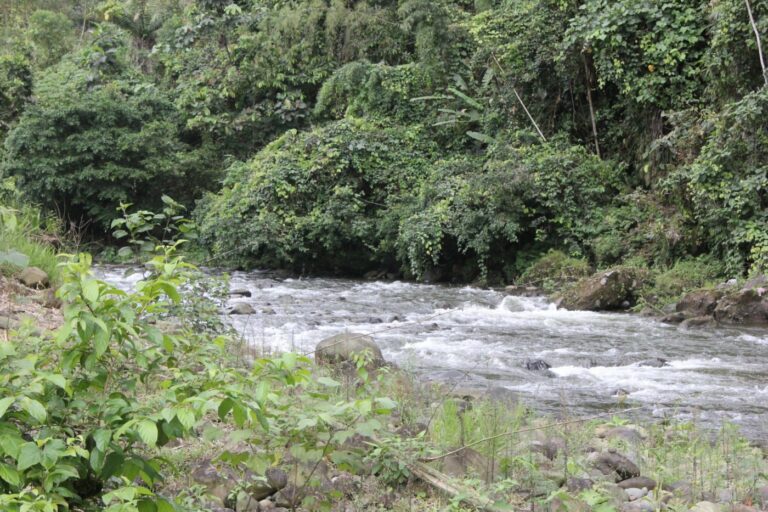Guayllabamba Waterkeeper and the Ancestral Community Practice of Mingas
By: Guayllabamba Waterkeeper

Did you know that for many generations in the indigenous communities of the Ecuadorian highlands, when irrigation water is lacking, everyone is summoned to build canals and that, at planting or harvest times, the community members come together to work on the land and that, is this how they usually act?
This is what we call “minga” in Ecuador, a solidarity community work system, present under different names in other countries in the Latin American region. It is a way of collectively solving the requirements of a community, in which each person, feeling part of it, contributes with their skills and abilities.
But what makes them work collectively, instead of individual efforts facing their own problems? The answer lies in a strong sense of community, which allows them to understand that any internal difficulty will necessarily affect the whole.
These are not paid actions but voluntary ones, carried out of solidarity without any economic recognition. It is very different from the “teamwork” applied in our companies, where the objectives do not always arise from their employees but rather from the employer, added to a clear profit intention.
It is a form of collective work that considers the cyclicality of the circumstances, because if at a certain moment the need of a community member is met, in the following occasions those of the rest will be satisfied.
This is how this sense of fraternal solidarity arises, of voluntary, reciprocal, and complementary action among its members, constituting an essential aspect for community life and development, since the mingas are authentic celebrations, where work becomes a party in which everyone participates.
This same idea, today, Guayllabamba Waterkeeper is applying with great success for the care and protection of the upper basin of the Guayllabamba River, particularly in one of its main tributaries, the San Pedro River.
For some years now, our organization has been leading a series of mingas for the cleaning of rivers beach and restoration of ravines in different areas of the Metropolitan District of Quito.
During the time of the pandemic, these activities were suspended and resumed at the end of 2021. Since then, we have carried out five more interventions, each with its own characteristic and scope, but all of them with great impact.
On November 21st. 2021, we returned to the field after almost two years of absence due to COVID-19. We did it with masks on because health regulations required it. We attracted around 80 volunteers who collected about 600 kg of waste on the beaches of the San Pedro River.
Our next minga was held on March 20th. 2022 as a celebration of World Water Day, in which some 150 volunteers from citizen organizations, colleges and universities, public and private companies participated, along with a good number of people committed to caring from the rivers.
On Sunday, June 5th, we again called a minga in the same Parque Los Algarrobos, where we worked since the end of 2021, in the parish of Cumbayá, 30 minutes from Quito, place where our office has also been operating since the pandemic emerged. It was held for World Environment Day, and we were joined by approximately 200 people.
August 7th was our fourth minga since we returned to the field and, as on previous occasions, several parallel events were organized to the cleaning activities such as the ceremonial greeting to the river, ecological tours, music, and playful activities for children, as well as environmental education stands. In total about 250 volunteers attended.
On Sunday, October 22nd we held our fifth minga, which this time had a very peculiar characteristic, since it was an ecumenical activity in which Catholics and Christians were present, along with members of the Green Sabbath Project and young people from the Jewish community, as well as people from the Lutheran church, people of the Hindu confession Brahma Kumaris and practitioners of Andean traditions. Together they blessed the river and then we all worked in minga.
We were more than 150 people and we collected around 1Ton of waste, like what was collected in each of the previous mingas, always surprised by the amount of clothes and plastic found.
In short, this is how our year 2022 passed. We started 2023 with new challenges like a regional minga in Latin American, but we will tell you about that in our next blog.
Guayllabamba Waterkeeper is able to do this kind of important work thanks to generous donations.